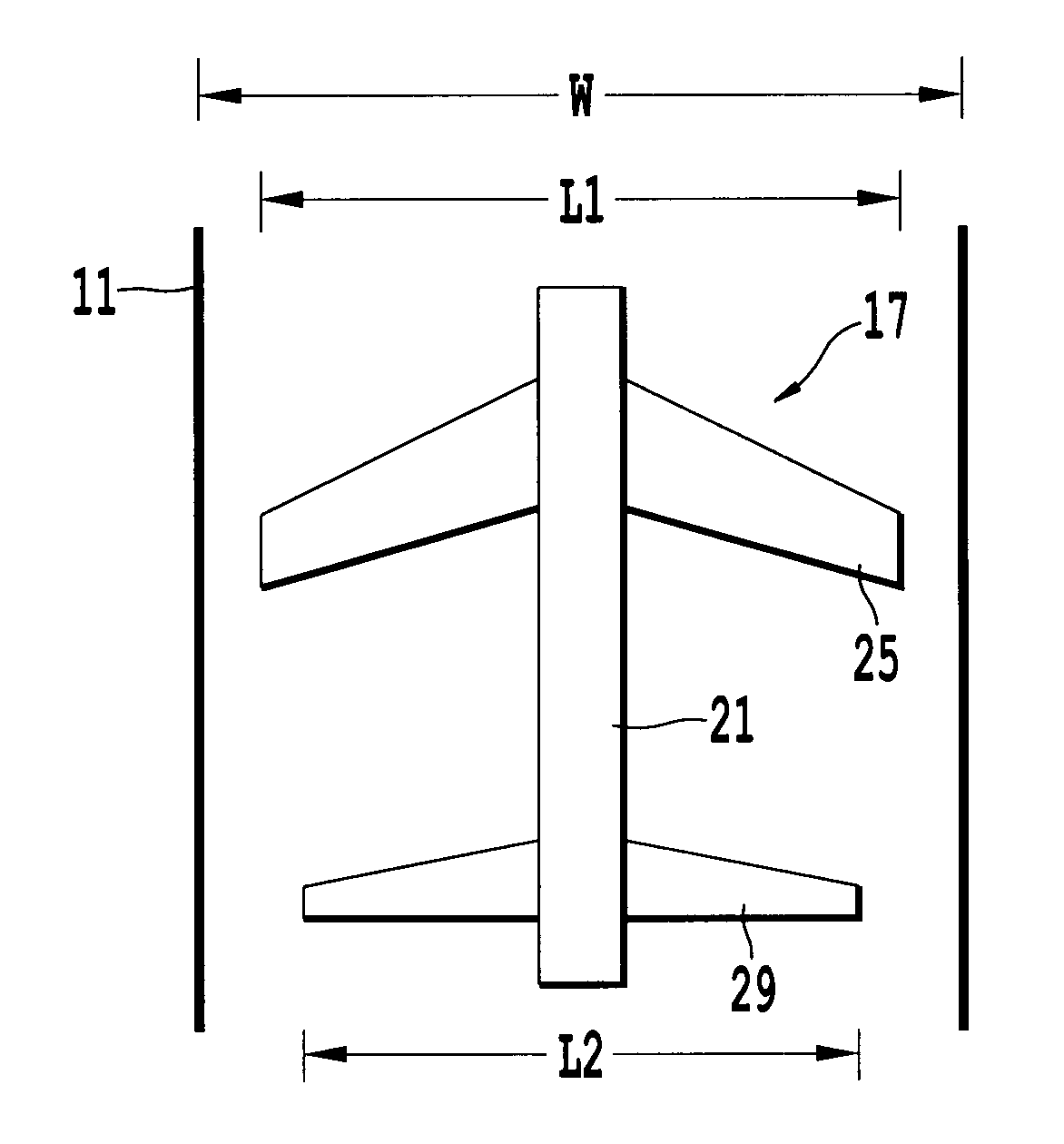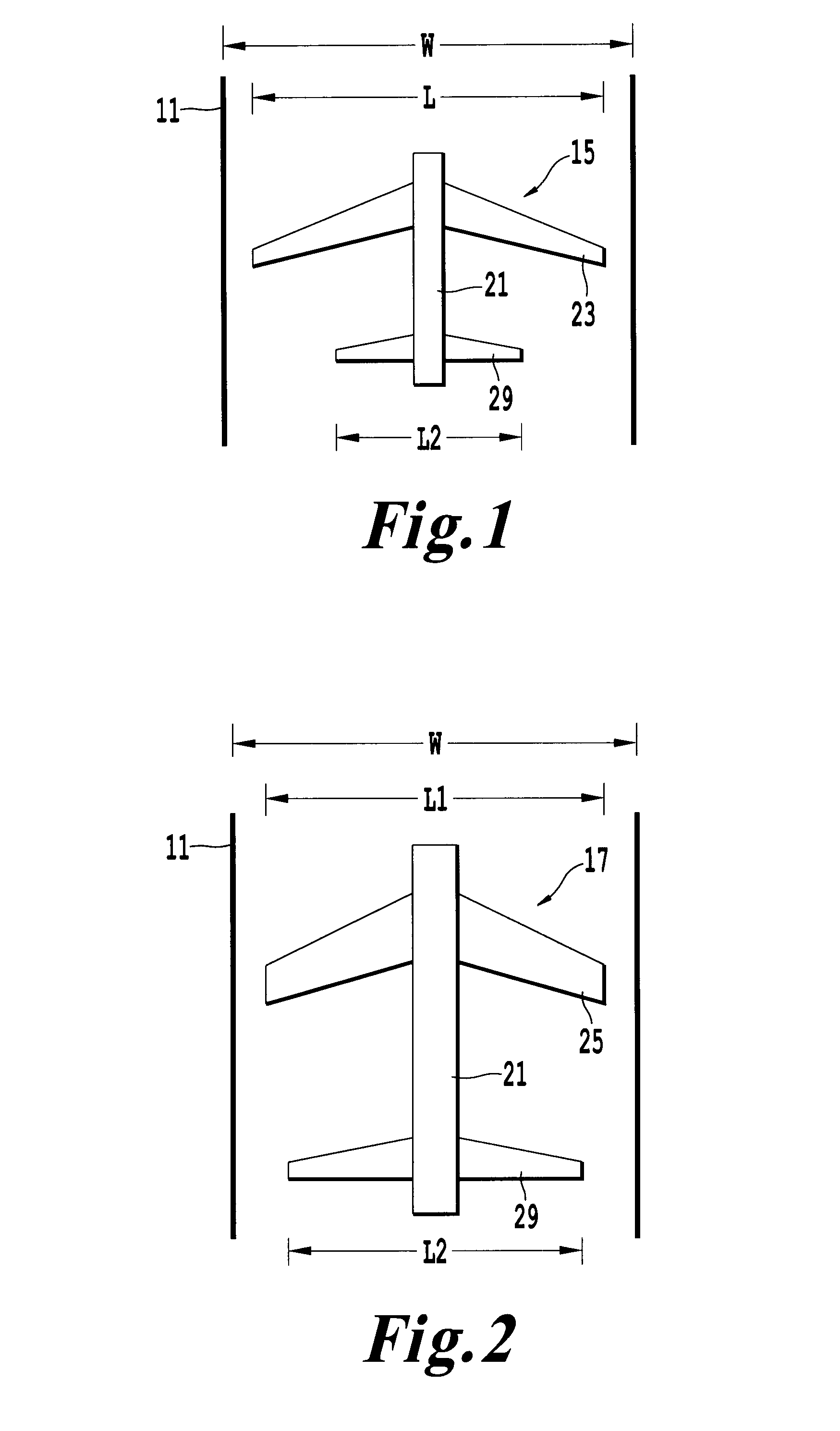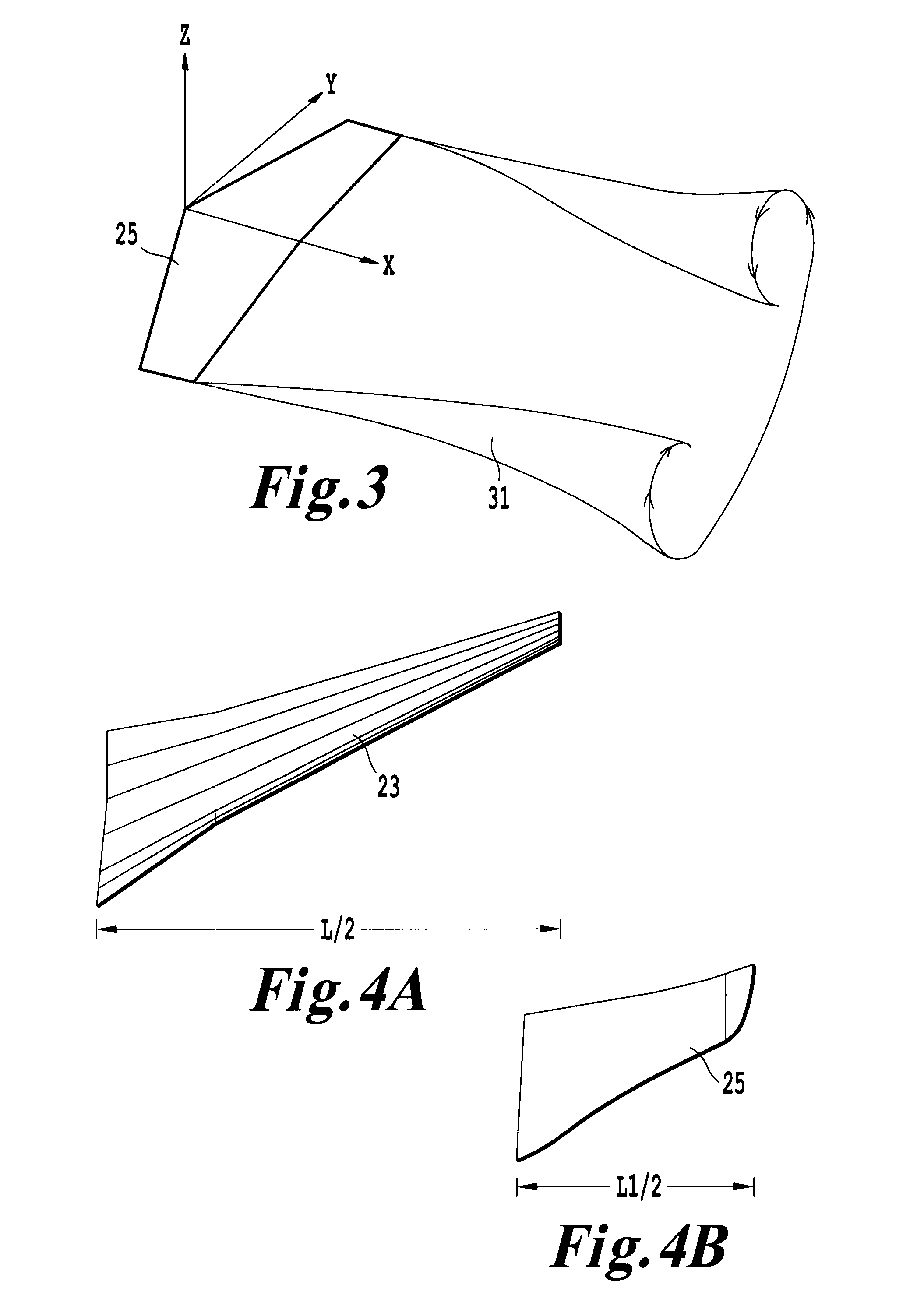Wind tunnel aircraft model with truncated wing
a wind tunnel and aircraft model technology, applied in the field of aircraft scaled models, can solve the problems of difficult scaling of results, loss of upstream dynamic pressure, and difficulty in obtaining comprehensive analytical models of aerodynamic behaviour, and achieve the effect of increasing the maximum scale of aircraft models and increasing the number of reynolds
- Summary
- Abstract
- Description
- Claims
- Application Information
AI Technical Summary
Benefits of technology
Problems solved by technology
Method used
Image
Examples
Embodiment Construction
[0026]Nowadays the design of aircrafts is done using Computational Fluid Dynamics (CFD) and Wind Tunnel Testing (WTT).
[0027]Wind tunnels are installations in which the aerodynamic behaviour of a scaled model of a proposed aircraft can be analysed. They are structures in which wind is produced, usually by a large fan, where the flow passes through one scaled model which is connected to instruments that measure and record the airflow around it and the aerodynamic forces that act upon it. The information obtained in wind tunnels is used for characterising the behaviour of the aircraft model under different flow conditions and therefore allows improving its design.
[0028]The aircraft model is placed in the wind tunnel with a suitable instrumentation to provide the required data. To obtain meaningful data, the flow parameters of Mach number and Reynolds number in the wind tunnel shall match the real aircraft flight conditions.
[0029]The Reynolds number expresses the ratio of inertial (resi...
PUM
 Login to View More
Login to View More Abstract
Description
Claims
Application Information
 Login to View More
Login to View More - R&D
- Intellectual Property
- Life Sciences
- Materials
- Tech Scout
- Unparalleled Data Quality
- Higher Quality Content
- 60% Fewer Hallucinations
Browse by: Latest US Patents, China's latest patents, Technical Efficacy Thesaurus, Application Domain, Technology Topic, Popular Technical Reports.
© 2025 PatSnap. All rights reserved.Legal|Privacy policy|Modern Slavery Act Transparency Statement|Sitemap|About US| Contact US: help@patsnap.com



